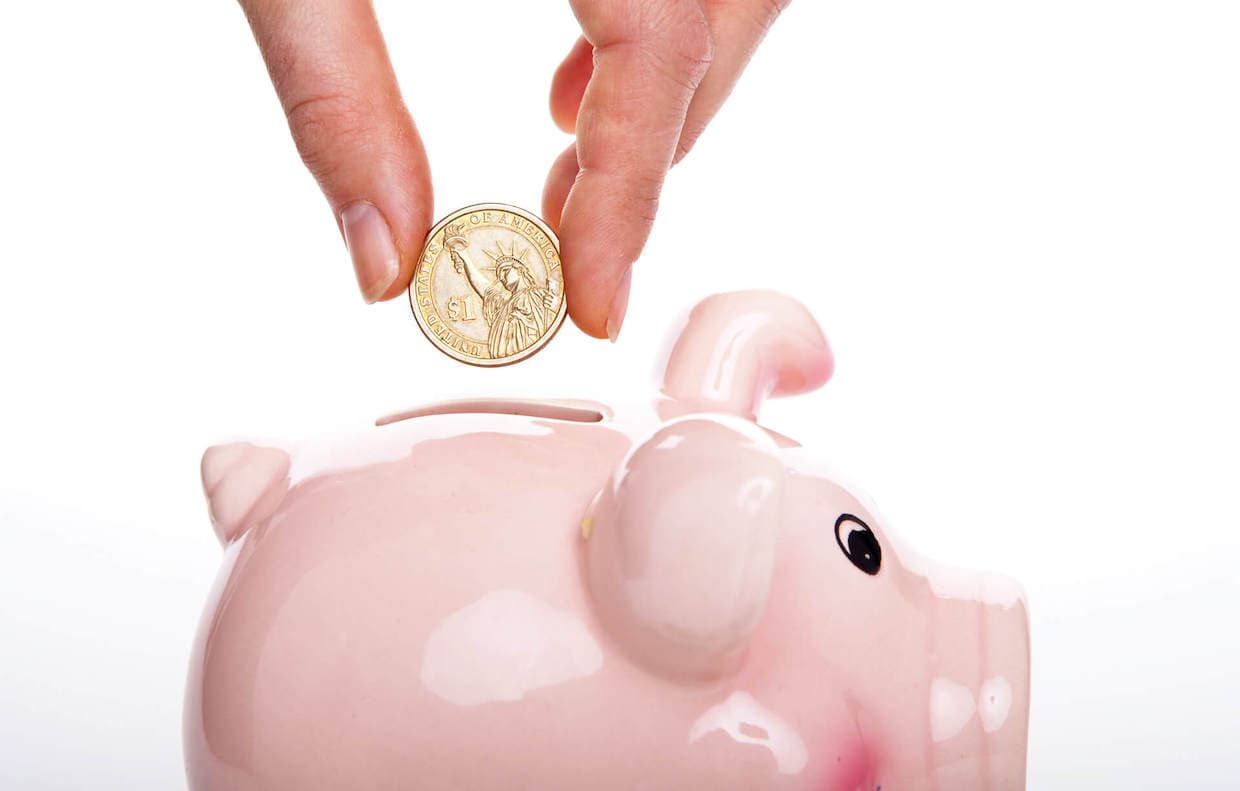Startup R&D Tax Credit Calculator
How much can your startup save in payroll taxes?
Estimate your startup R&D tax credit using our free calculator.

Your VC-backed startup probably qualifies for the research and development (R&D) tax credit if you do any of these things:
- Develop or design new processes or products
- Improve existing processes or products
- Improve existing prototypes or software
The R&D tax credit could save your company thousands of dollars, adding to your runway and maximizing your funds.
R&D Tax Credit Calculator
Estimate your R&D tax credit using our free calculator
Startup R&D Tax Credits
The IRS has a startup R&D tax credit that allows unprofitable startups to decrease their payroll tax liabilities by up to $500,000 after the passage of the Inflation Reduction Act. The tax credit is available to startups that conduct qualified R&D activities within the United States. Kruze clients are collectively saving over $75M using this credit.
R&D Tax Credits for Startups - What You Need to Know
There are several important points for startup founders to know about R&D tax credits, how they are calculated and how to claim them.
- Even unprofitable startups can likely decrease their burn rate using R&D tax credits - they are offsets to payroll taxes that all companies with payroll in the US pay.
- Don’t file your tax return with out the R&D tax credit paperwork (Form 6765)! Once you file your final tax return, you can no longer get the payroll tax offset - so file an extension if your CPA hasn’t completed the R&D forms by the time that your return is ready. And the IRS is requiring major documentation if you file an amended return with a R&D tax credit, so file it right the first time!
- The credit is based on “qualified,” domestic research and development spend. Spend outside of the USA doesn’t count, and the definition of qualified work is more complicated than it sounds. Work with an experienced CPA firm to calculate this. The amount is roughly 10% of qualified spend.
- R&D credit “puppy mills” often do shoddy work that opens up startups (and their tax preparer) to legal action - watch out for supposed specialists in the R&D credit calculation space; there are numerous examples of the IRS going after all of the clients of these firms when they find evidence of shoddy work.
- The Inflation Reduction Act increased the maximum “cash back” credit startups can get from $250,000 to $500,000. However, we estimate that most startups will get $50,000 to $60,000 - still a great burn rate reduction!
The Kruze Consulting R&D Tax Credit Calculator is designed to estimate your R&D tax credit using Federal Form 6765.
Let Kruze Consulting handle your startup’s R&D Tax Credit analysis and preparation.
We charge a fixed fee of 1.5% of the anticipated qualifying expenses with a minimum fee of $1,000. Our clients are saving over $10 million per year!
How to calculate R&D Tax Credit amount
Again, we strongly advise you to work with a qualified R&D tax credit advisor - a CPA like us - since this is a difficult tax form to fill out, and estimating the amount is difficult.
Estimating an R&D tax credit
- Determine Your Total Qualified Research Expenses (QRE): Sum up all theQRE for the tax year. This should include only the expenses you’ve identified as qualified under the IRS guidelines. This is a great reason to work with an experienced CPA who can help you avoid claiming expenses that don’t count toward the credit - and who can help find expenses that you may not know about that do meet IRS specifications.
- Select the Calculation Method: Choose between the Traditional Credit Method and the Alternative Simplified Credit (ASC) method.
- Traditional Method: Calculates the credit as 20% of the excess of current year QRE over a base amount. The majority of startups use this method, as it yields the highest credit for most technology companies.
- ASC Method: Provides a 14% credit for QRE that exceed 50% of your average QRE for the three preceding tax years.
- Calculate the Base Amount (for Traditional Method):
- Determine the excess of current year QRE over this base amount.
- Apply the Credit Percentage: For the Traditional Method: Apply 20% to the excess QRE calculated above.
- Adjust for the Inflation Reduction Act: For tax year 2023 onwards, the maximum credit limit has increased. Adjust your calculations accordingly.
How much is the R&D tax credit?
The R&D tax credit has increased to $500,000 starting in the tax year ending 2023. The credit amount is roughly calculated as 10% of the qualified expenses - but there are substantial complications so work with a CPA to know how much the exact amount is for your company.
Unprofitable startups can use this to offset / get a refund for their Federal Insurance Contributions Act (FICA) Social Security tax (currently 6.2%) as well as the Medicare taxes (currently 1.45%).
The Inflation Reduction Act and R&D Tax Credits
The Inflation Reduction Act doubles the possible R&D tax credit that a startup can get to half a million dollars.
We analyzed over 625 startup tax returns and noted that only 2.5% of startups would be eligible for over $250,000 in credits. Of course, this is still a great incentive that startups should take advantage of to reduce their burn rate!
Increased documentation rules
Recently, the IRS is requiring additional documentation from startups that are claiming research and development tax credits. The new requirements include providing more information about the startup’s R&D claim.
Startups will need to identify:
- The “business components” to which the R&D claim relates
- All research activities performed for that business component
- The individuals performing the research
- The information the research is intended to provide
- The total qualified research expenses that are being claimed
If the IRS rejects your claim, you may not have the opportunity to “perfect” your claim and you may lose R&D tax credits. It’s important for you to review these requirements with an R&D tax professional so you document them properly.
Caveat: The information on this page intended as general guidance and it doesn’t substitute the need to work with a professional. It’s also a high level overview and is in no way complete.
Your company is unique; contact Kruze Consulting.

Startup R&D Tax Credits FAQs
- What is the benefit of an R&D tax credit for startups?
- Why are R&D tax credits now so valuable for startups?
- Why should I have my startup file for the R&D tax credit payroll offset?
- Section 382
- How much does Kruze Consulting charge for R&D tax credit preparation?
- Is my startup eligible for the R&D tax credit payroll offset? What defines research & development?
- Are there any R&D activities that don't qualify?
- Is my startup eligible for the R&D tax credit payroll offset?
- What qualifies as an R&D expense? What goes into the calculation?
- When should I file the R&D tax credit payroll offset?
- How much will my startup really save by implementing the startup R&D tax credit payroll offset?
- How much money can you save with the R&D tax credit?
- How Can Startups Benefit from up to $250K to $500k in R&D Tax Credits and Deductions?
- Can unprofitable companies claim the credit?
- Which states have R&D tax credits for startups?
- What is a R7D tax credit?
- Do Acquiring Companies Value a Startup's R&D Credits?
- Remember these R&D tax credit expense categories
- What counts as research and development for the R&D tax credit?
- Which startups can take advantage of the R&D tax credit?
- How do I claim the R&D tax credit payroll offset?
- Three tips to keep you from missing the R&D tax credit.
- Two often overlooked expenses in the R&D tax credit
- How do startups account for an R&D tax credit refund?
- What is your payroll provider’s involvement with the R&D tax credit?
- What is the upfront cost for filing for an R&D tax credit?
- What is the average size of an R&D tax credit?
- Fraudulent R&D tax credits
- Can an international contractor be included on an R&D tax credit?
- Do you know how to max out your R&D tax credit?
- If you've filed your taxes and your accountant didn’t do an R&D Tax Credit for you, can you still get it?
- New IRS rules tighten requirements for amended R&D credit claims
- Don’t let a local, non-startup specialized tax accountant mess up your R&D Tax Credit
What is the benefit of an R&D tax credit for startups?
The R&D tax credit helps VC-backed startups extend their runway. Primarily, it allows startups to receive cash back by offsetting their payroll taxes, which is really useful since most startups are not yet profitable. Startups can apply a percentage of their R&D expenses against their payroll taxes, reducing the costs of hiring employees. This process is typically managed by payroll providers working with the startup’s CPA firm, to make sure the credit is applied correctly.
However, startups do need to be careful with the R&D tax credit because it comes with the potential for government audits. The IRS scrutinizes these credits closely, since they represent revenue that the government would otherwise collect. You absolutely need to work with a reputable and experienced CPA firm. CPA firms are highly motivated to avoid errors, since mistakes can lead to pretty severe consequences. Startups need to work with a trusted CPA firm that prioritizes accuracy to protect themselves from potential problems.
Why are R&D tax credits now so valuable for startups?
First, what is an R&D tax credit? When you spend a lot of money on true R&D, your engineers are building something unique and novel, you can capture a small percentage, about 5 or 10%, of that spend into credit. Today’s R&D tax credit can be used to offset payroll costs that even unprofitable startups incur, although this was not always the case (read on to learn more about the history of the incentive). It’s a nice policy designed to encourage companies to spend money on R&D and move the ball forward in technology.
In the past, R&D tax credits were not able to be used immediately. R&D tax credits have been around for a long time, but in the past, you could do an R&D tax credit, but you couldn’t use it until you were profitable. For most startups, they don’t hit profitability until about five to ten years in. Or they may even be acquired before hitting profitability. It became this thing where it’s a low ROI thing for startups. The feeling was, “why would I spend precious dollars now for some benefit that I’ll maybe get 5 to 10 years from now?” Because of this, many companies either did a placeholder or they just wouldn’t file it.
A few years ago, the tax policy changed. Congress, the Treasury, and the IRS got together a few years ago and said, “how can we incentivize more R&D expenditures in our economy?” What they realized was that startups, one of the biggest innovation engines in the economy, were not taking advantage of the R&D tax credit. They realized they needed to make it more applicable and ROI-positive for them immediately. Once they looked around and they realized that pretty much every startup that was doing R&D was paying payroll taxes, they realized they could let startups apply for the credit against their payroll taxes, and that made them ROI positive immediately. Use the Kruze R&D tax credit calculator to estimate how much money your startup could save using this valuable incentive. Kruze has helped hundreds of companies save millions of dollars - this year our clients are collectively saving over $10 million. Take advantage of this government program!
Why should I have my startup file for the R&D tax credit payroll offset?
It saves You direct $$$ NOW!!! The Treasury actually sends a check, or your payroll provider decreases your payroll taxes, so you save money now. For the year ended 2021, you can save up to $250,000, and for the tax year 2023 the amount is increased to $500,000!
Use our R&D tax credit calculator - above - to estimate how much of this valuable government incentive your startup can get.

Section 382
Section 382 is a part of the IRS code that the IRS created 20 or 30 years ago to try to limit how corporations could use their net operating losses to reduce their profits.
This is a difficult calculation, and we do not recommend you try to do a Section 382 calculation on your own. And startups really ought to work with a CPA who knows early-stage businesses, because part of the calculation involves looking at your company’s capitalization table. Unless your accountant works with venture-backed companies, they are going to have problems applying Section 382 to your VC backed cap table!
At a high level, there are 3 items or “triggers” to Section 382.
If you become profitable. You are going to want to start using your Net Operating Losses (NOLs) - so contact us or a CPA who knows early-stage companies.
If you are getting acquired. If a big company is buying your business, they are going to want to use those NOLs, and those NOLs have real value. You are going to want to capture those, so again, get a good accountant to help you. On average one to three of our clients are acquired each and every month, so we know how to negotiate with public company tax teams!
If you are liquidating some of your assets, you probably have valuable NOLs.
Watch the video to learn more.
How much does Kruze Consulting charge for R&D tax credit preparation?
For Startup R&D Tax Credit analysis and preparation, Kruze Consulting charges a fixed fee of 1.5% of the anticipated qualifying expenses with a minimum fee of $1,000.
Is my startup eligible for the R&D tax credit payroll offset? What defines research & development?
Unfortunately, not every company is eligible. You must be creating something new, and by new I mean pass the IRS’ 4 Part Test. Your R&D must be:
- Specific: no mindless tinkering allowed. The project must be defined.
- Eliminate uncertainty: must be contributing real scientific advancement, not just proving existing knowledge.
- Experimental: either have a scientific method or trial and error process.
- Technical: the work must be grounded in the hard sciences like biology or engineering.

Are there any R&D activities that don't qualify?
Yes. Here are a few:
- Research after commercial production.
- Adaptation of existing business components.
- Duplication of existing business component.
- Reverse Engineering.
- Surveys & studies.
- Computer software for internal use.
- Foreign research.
- Research in the Social Sciences, Arts, Humanities, etc. Funded research.
Is my startup eligible for the R&D tax credit payroll offset?
Your startup must have qualifying R&D expenses (see definition below). Your business must be new; only startups that have generated revenue for 5 years or less can claim the new tax credit. If you had receipts prior to 2012, then you’re ineligible. Your company must have less than $5 million in revenue in 2018 and each subsequent year that you claim the payroll offset.

What qualifies as an R&D expense? What goes into the calculation?
What goes into the calculation of an R&D expense, for the tax credit calculation purposes? And the answer is there are four main categories.
The first of which is wages. And this is where you’re going to capture a lot of your value. But keep in mind you can only do this for people who are engaged in R&D type activities. So usually this is your engineers.
Next up are your subcontractors. But again, only those are engaged in R&D and only the ones that are domestic.
Next up we have supplies, this is your nuts bolts all of the hardware that kind of goes into whatever you’re developing. You can absolutely include that in the R&D tax credit study.
Last but not least, but we rarely see this computer leases and rentals.
When should I file the R&D tax credit payroll offset?
Early in the year, after you’ve close your books, it’s time to get ready to file for the credit. Work with your CPA on an R&D tax credit study: once you’ve determined what your tax credit will be, add it to your annual corporate form 1120 and file the return. In the quarter following your 1120 filing, you can start applying those tax credits to your payroll taxes.
For example, if you file your Form 1120 by March 15th, the first payroll tax offset you would receive is for Q2.

How much will my startup really save by implementing the startup R&D tax credit payroll offset?
~10% of eligible R&D costs, up to $250,000 per year, for 5 years. This amount doubles for the tax year 2023 to $500,000. Our average client saves between $50,000 to $60,000, but we estimate that about 2.5% of our clients will get over $250,000 for the tax year 2023 thanks to the Inflation Reduction Act.

How much money can you save with the R&D tax credit?
You can save about 10 percent of your eligible R&D costs up to half a million dollars per year for up to five years. So, if you have about 2.5 million dollars in engineering R&D expenses for last year you can get close to a quarter of a million.
How Can Startups Benefit from up to $250K to $500k in R&D Tax Credits and Deductions?
Many young companies with annual sales of less than $5 million can apply up to $250,000 of their research and development (R&D) credit to reduce their payroll tax liability. This amount doubles for tax year 2023 thanks fo the Inflation Reduction Act. This means that many unprofitable, young companies can cut their burn up to a quarter of a million dollars per year. This replaces the older rules that did not allow loss making businesses (i.e. most startups) from using these offsets until they generated an income tax liability (i.e. a profit!)
Your company should work with a qualified expert like Kruze to make sure that your business is eligible, and to conduct a solid study that only uses appropriate expenses that the IRS will agree with. And use our calculator to estimate your credit.

Can unprofitable companies claim the credit?
Yes. Your company does not have to be generating profits or positive net income to claim the payroll tax offset offered by the Research & Development credit. This is a very valuable, ROI-positive activity than an unprofitable startup can do to reduce their burn rate.
Which states have R&D tax credits for startups?
In addition to the federal credit, many state governments have incentives that dovetail with the federal R&D credit; some of these are helpful to VC-backed startups. Approximately 36 of the states have this credit: Alaska Arizona Arkansas California Connecticut Colorado Delaware Florida Georgia Hawaii Idaho Illinois Indiana Iowa Kansas Kentucky Louisiana Maine Maryland Massachusetts Minnesota Nebraska New Hampshire New Jersey New Mexico New York North Dakota Ohio Pennsylvania Rhode Island South Carolina Texas Utah Vermont Virginia Wisconsin.
Specifically, other R&D tax credits for startups and their investors include:
- California R&D Tax Credit - for research stage companies
- Maryland Biotechnology Investment Incentive (BIITC) -good for investors, not for startups
Another incentive biotechnology companies in California should consider is the California Partial Sales Tax Exemption.
What is a R7D tax credit?
A common misspelling of R&D tax credit is “R7D tax credit” - where the “&” is replaced by the “7.” This happens because the number 7 key and the ampersand key are the same on most keyboards (of course, you need to hit shift 7 to get the ampersand). Don’t worry if you’ve made this mistake - we’ve all done it!!
And while you’re here, use our R&D tax credit calculator to estimate your possible savings under this government incentive!
Do Acquiring Companies Value a Startup's R&D Credits?
The biggest technology companies in the US - Apple, Amazon, Facebook - have very sophisticated tax and finance teams. These teams conduct intense due diligence when they acquire startups - including looking at the R&D credits. Below is a typical question that a big tech company would ask a startup on their due diligence checklist:
Provide an analysis of all tax attributes (e.g., net operating losses, capital losses, built-in losses, R&D credits, etc.), including expiration dates of such attributes and any applicable limitations on the utilization of such carryovers.
One major advantage of working with Kruze is that we have great accountants on staff who are used to answering these types of questions. We wouldn’t expect a startup founder to be able to provide such a detalied analysis - but we can!
Remember these R&D tax credit expense categories
When startups apply for the R&D tax credit, they should consider the following general expense categories:
- Wages: Salaries, wages, and other forms of compensation paid to employees directly involved in qualified R&D activities. This includes researchers, engineers, and developers working on the creation or improvement of products, processes, or software.
- Contract Research Expenses: Payments made to third-party contractors or consultants for conducting R&D activities on behalf of the startup. The expenses must be related to qualified research and the work must be performed within the United States.
- Supplies: The cost of supplies used in R&D activities, such as raw materials and other tangible property. However, this category excludes capital equipment and general office supplies.
- Rental or Lease Costs: Expenses related to renting or leasing computers and equipment used in R&D activities. These costs can be included if the equipment is directly used in the R&D process.
Startups should make sure that these expenses are properly documented and directly related to the R&D activities that qualify for the credit.
What counts as research and development for the R&D tax credit?
We’re often asked what, specifically, qualifies as research and development for the R&D tax credit. There’s a four-part test the IRS uses:
- Specific Purpose: The work must have a clear and specific purpose, so casual or unfocused tinkering doesn’t count.
- Elimination of Uncertainty: Your research should aim to eliminate uncertainty, meaning it should contribute to genuine scientific advancement rather than just proving something that’s already known.
- Experimental Process: The work must involve experimentation, either through the scientific method or a systematic trial-and-error approach.
Technical in Nature: The work needs to be rooted in the hard sciences, like biology or engineering, rather than in the arts or humanities.
Which startups can take advantage of the R&D tax credit?
The good news is that most startups do qualify for the R&D tax credit. But your startup’s eligibility depends on some key criteria.
- First, your startup must be relatively new. Only companies that have been generating revenue for five years or less are eligible for this credit.
- Second, your startup must have earned less than $5 million in revenue in each year that you plan to claim the payroll offset.
How do I claim the R&D tax credit payroll offset?
Here’s what you need to do:
First and most importantly, work with a startup CPA. Many companies go to a general CPA (or even worse, a non-accredited preparer) who isn’t familiar with the R&D tax credit, resulting in either no credit or poor-quality work. This can lead to missing out on tens or even hundreds of thousands of dollars in savings. So, make sure you choose a CPA who specializes in startups and accounting for the R&D tax credit inside and out.
Second, your startup CPA needs to file the R&D tax credit using Form 6765, which is the “Credit for Increasing Research Activities.” This form is submitted with your annual tax return, specifically Form 1120, the major tax return you file each year.
Finally, after your tax return is filed and accepted by the IRS, you’ll need to work with your payroll provider to claim the R&D tax credit on payroll tax Form 941. Gusto because they make the process simple, but most payroll processors should be able to assist you.
Follow these steps:
- File the R&D tax credit on Form 6765 (Credit for Increasing Research Activities) which is a part of your 2020 annual corporate form 1120 (US Corporation Income Tax Return).
- Claim your R&D tax credit on payroll tax form 941 (Employer’s Quarterly Federal Tax Return); you’ll need to work with your payroll processor to make this happen. We love working with Gusto, but just about every major payroll processor should be able to help.
Three tips to keep you from missing the R&D tax credit.
The R&D tax credit can significantly reduce your payroll taxes if you’re engaged in true R&D – like building something truly innovative. Here are three tips to keep your startup from missing out on this credit.
Tip 1: Work with a reputable accounting firm that also handles taxes. If you go with an accounting firm that outsources tax work, you’re at risk of poor quality and miscommunication. An accountant who isn’t familiar with startups and your bookkeeping may miss out on key opportunities.
Tip 2: Always file a tax extension. Many companies stick with subpar accountants through the end of the year, only to find out later that they missed out on the R&D tax credit. If you file your taxes in a rush without an extension, and the credit is overlooked, you could lose out on tens of thousands of dollars in payroll tax offsets. Filing an extension lets you review and correct any mistakes.
Tip 3: Keep track of your major engineering projects and the time your team spends on them. It’s essential to document who is working on what and to have rough estimates of the hours spent on specific R&D activities. This information is crucial for your R&D tax study. At Kruze, we provide a detailed 25-page document that you can use for auditors, late-stage investors, or during a due diligence process. Proper documentation means you’re fully prepared for any scrutiny.
Two often overlooked expenses in the R&D tax credit
Two often overlooked expenses that can be included in your R&D tax credit. Two smaller categories that can affect your R&D tax credit are:
- Cloud computing expenses. These costs can include server usage, data storage, and other cloud-based services directly tied to your R&D activities. Make sure that the cloud services are essential to the development or improvement of your products or processes.
- Machine learning or artificial intelligence. These are often eligible expenses. Expenses such as data processing, algorithm training, and software development related to AI projects can qualify. Again, you need to make sure that the AI or machine learning efforts are focused on creating new or improved products, processes, or software. The Kruze team knows a ton about AI - if this is your startup, talk to us!
How do startups account for an R&D tax credit refund?
When accounting for an R&D Tax Credit rebate in a company’s financial statements, there are a few approaches to consider. The first method involves applying the rebate directly to the payroll tax account on the income statement, as if you’re doing cash basis accounting. That can result in a negative payroll tax expense for the month if the rebate exceeds the payroll taxes due. And this method may create challenges for financial projections, making them less accurate.
The preferred method at Kruze Consulting is to use accrual accounting. This approach involves creating a tax receivable account on the balance sheet to reflect the total expected R&D tax credit rebate. As the company receives the rebate checks, the amount is applied against the receivable account, gradually reducing it. Simultaneously, the rebate is accrued on the income statement, smoothing out the benefit over several months. This method provides a more accurate and easier-to-understand profit and loss statement, and follows accounting best practices.
A third, less recommended option is to record the rebate as other income or expenses, placing it below the line on the income statement. While this method avoids impacting payroll tax projections, it may not provide the same clarity or alignment with accrual accounting principles.
What is your payroll provider’s involvement with the R&D tax credit?
Payroll providers play a crucial role in the process of obtaining an R&D tax credit refund for startups. After an accounting firm like Kruze Consulting completes the R&D tax credit study and incorporates it into the company’s tax return, the payroll provider submits Form 8974 to the IRS and Treasury. This form contains essential details about the company and the size of the credit, and it triggers the refund process. Payroll providers act as key intermediaries, making sure that the necessary information reaches the IRS to initiate the rebate.
Having your accountant prepare the documentation - and then doing your monthly books - helps keep the payroll provider… honest. We’ve seen too many cases where the payroll provider incorrectly filed the forms, or even worse, forgot to file them. Since we watch our clients’ books when we do their monthly accounting, this helps our clients have a second set of eyes to make sure the credit comes through correctly!
There are two main methods for receiving the R&D tax credit refund: the post-quarter refund and the real-time credit. The post-quarter refund typically arrives six to eight months after the submission, often in the form of a check, giving the startup a significant financial boost. Alternatively, some payroll providers, like Gusto, offer a real-time credit option where they stop withholding the Social Security portion of the employer’s payroll taxes immediately after the submission of Form 8974. This option, although it comes with a small monthly fee, allows startups to benefit from the rebate right away by reducing payroll taxes in real-time.
Make sure you maintain strong relationships with both the accounting firm and payroll provider. That will help you have a smooth and efficient R&D tax credit refund process.
What is the upfront cost for filing for an R&D tax credit?
Startups shouldn’t face any upfront costs for an R&D tax credit study. At Kruze Consulting, we conduct the R&D tax credit study as part of the tax return preparation process, without charging advance fees. The study involves detailed work such as allocating employee hours and assessing project costs, and is integrated into the federal and state tax returns. This means that the cost of the study is covered as part of the tax filing, and the startup is only billed once the credit starts coming in.
Additionally, some payroll providers, like Gusto, offer services that further streamline the process. Gusto, for example, allows startups to stop withholding the Social Security portion of payroll taxes once the tax return is filed and the R&D tax credit documentation is submitted. This means startups can immediately benefit from the credit without additional costs, making the process efficient and cost-effective.
What is the average size of an R&D tax credit?
R&D tax credits can significantly benefit startups by providing payroll tax rebates. This rebate, specifically for the Social Security portion of payroll taxes, has become increasingly valuable since the IRS and Treasury implemented it.
On average, Kruze Consulting’s clients receive around $45,000 per credit, though this figure varies widely. Smaller, early-stage startups might see credits in the range of $5,000 to $10,000, reflecting their lower R&D expenditures. In contrast, more established companies with higher burn rates and significant capital investment might secure credits that are much higher. This wide range highlights the flexibility and potential of the R&D tax credit for different stages of company growth.
Even smaller credits can be highly beneficial for startups, potentially covering significant expenses such as a month’s salary for a key engineer. To maximize the benefits of the R&D tax credit, you should work with a knowledgeable CPA. The credit is integrated into your startup’s tax return, and having a CPA manage the process ensures that it is handled correctly.
Fraudulent R&D tax credits
Recently, there has been a surge in fraudulent schemes targeting startups seeking R&D tax credits. These scams often involve unsolicited emails promising large sums of money in exchange for upfront payments, typically around 30% of the credit amount. These offers seem too good to be true, and they usually are. Scammers frequently rely on vague promises and typically won’t get involved in an IRS audit, which means you’re in trouble if issues arise with their tax credit claims.
Legitimate R&D tax credit providers shouldn’t charge upfront fees or offer unrealistic guarantees. At Kruze Consulting, we conduct thorough studies and include the credit in the company’s tax return, making sure your return is accurately documented and in compliance. We are also CPAs, and we’ll help you defend the credit if you’re audited, unlike fraudulent providers who may not be involved beyond initial submissions.
To protect against fraud, startups should only work with CPA firms registered with state boards of accountancy, which enforce rigorous professional standards. Scams are often characterized by high fees and minimal accountability, making it crucial for startups to conduct due diligence and avoid deals that appear suspicious.
Can an international contractor be included on an R&D tax credit?
This is a common question, especially as more companies hire globally due to the increasing ease of remote work. No, international contractors can’t be included in an R&D tax credit claim. The IRS has a specific rule called the “foreign disallowance,” which prevents businesses from using the money spent on international contractors for R&D tax credits. The reason is straightforward: the R&D tax credit is tied to Social Security taxes, which foreign contractors don’t pay to the U.S. government.
In contrast, payments made to U.S.-based contractors for R&D activities can be included in the R&D tax credit calculation. The government’s logic is that since U.S. contractors contribute to Social Security taxes, companies can receive a rebate on those taxes through the R&D tax credit. However, since foreign contractors don’t pay these taxes, there’s no corresponding rebate available, so their expenses are disallowed from the credit. Given the complexity of these regulations, it’s essential to work with a knowledgeable CPA firm when handling R&D tax credits.
Do you know how to max out your R&D tax credit?
The immediate return on investment of the R&D Tax Credit can be particularly valuable since almost all startups with employees pay payroll taxes. To fully leverage this credit, you need to employ U.S.-based workers, such as engineers, software developers, or biotech researchers, who are engaged in genuine R&D activities. Their salaries can be partially reclaimed through the credit, provided they are paying U.S. Social Security taxes. It’s important to note that payments to foreign contractors, even those hired through U.S.-based platforms like Upwork or Fiverr, do not qualify for this credit.
The credit gets closely scrutinized by the IRS, so startups should make sure they are accurately reporting qualifying expenses and not including non-eligible activities like basic UI design or non-innovative work. By hiring U.S.-based employees or contractors who are doing substantial R&D work, startups can maximize the credit while minimizing audit risks. You should always take a conservative approach and work with an experienced CPA who can help navigate the complexities of the credit.
If you've filed your taxes and your accountant didn’t do an R&D Tax Credit for you, can you still get it?
If your accountant didn’t include the Research and Development (R&D) Tax Credit in your tax return, it could cause you to miss out on substantial financial benefits, such as a $60,000 to $70,000 credit, which your startup could have used to offset payroll taxes. The R&D Tax Credit provides an immediate return by reducing payroll taxes.
However, there’s good news if your accountant filed an extension and you are still within the deadline, typically October 15th. If that’s the case, you can amend the tax filing to include the R&D Tax Credit so you can take advantage of your research and development expenses. On the other hand, if no extension was filed, or if the deadline has passed, you may lose the opportunity to claim the payroll tax offset. However, you can still apply for the traditional R&D Tax Credit retroactively, which can be used against future profits when the company becomes profitable.
This is pretty beneficial for startups planning for long-term growth. Although the retroactive credit won’t provide the immediate payroll tax offset, it can still be valuable as the company grows and becomes profitable. That’s why it’s important to work with a knowledgeable accountant who understands startups and and makes sure that all your potential credits are claimed, so you can maximize your financial resources.
New IRS rules tighten requirements for amended R&D credit claims
As of 2022, the IRS has new documentation requirements for startups and other companies filing amended tax returns that claim the research and development (R&D) tax credit. Because the IRS gets thousands of tax credit claims each year, they’re requiring taxpayers to provide much more documentation if their claims for the tax credit are considered deficient.
What’s more, if the IRS rejects your claim, you’re barred from recovering tax credits or refunds, and you’re prevented from taking legal action. That’s why you should always work with a CPA with extensive experience in startup accounting.
Don’t let a local, non-startup specialized tax accountant mess up your R&D Tax Credit
When startups work with local accountants who don’t have expertise in the specific needs of venture capital-backed startups, they often miss out on significant tax benefits, including the Research and Development (R&D) Tax Credit. Many founders unknowingly choose local CPAs out of convenience or cost, without realizing that these accountants might not be familiar with the nuances of startup tax credits. As a result, companies can lose out on substantial savings, sometimes missing $50,000 to $60,000 in credits that could offset their payroll taxes – a valuable resource for startups engaged in real engineering and technology development.
In fact, some accounting firms outsource their tax work to third parties who may also lack the necessary knowledge or attention to detail, and that can lead to errors in their financials, tax returns, tax credits, and state tax nexus. If you work with a firm that specializes in venture capital-backed startups, these critical tax credits won’t get overlooked and your tax returns will be prepared accurately.
Ultimately, startups need to partner with tax professionals who understand their unique needs and have a vested interest in getting things right. Firms like Kruze Consulting, which focus on startups, take responsibility for the accuracy of the R&D Tax Credit and other tax filings, making sure clients maximize their tax benefits.
About the Author
Vanessa Kruze, CPA, is a renowned expert in startup finance and tax strategy, particularly in the realm of R&D tax credits. As the founder and CEO of Kruze Consulting, Vanessa has guided hundreds of startups through the complexities of financial management, helping them secure billions in venture capital funding. Her firm, recognized as an Inc 5000 fastest-growing company for six consecutive years, specializes in optimizing tax benefits for startups, including the strategic use of R&D tax credits to extend runway and reduce burn rates. Vanessa’s extensive experience in advising startups on tax compliance and VC due diligence makes her a trusted authority in the field.












